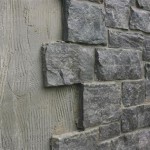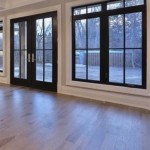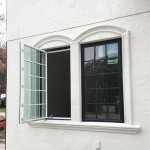Contemporary Interior Design
Contemporary interior design is a constantly evolving aesthetic that reflects the present moment. It encompasses a broad range of styles and influences, drawing upon modern design principles while incorporating current trends, technology, and cultural shifts. Unlike modern design, which refers to a specific historical period (roughly the early to mid-20th century), contemporary design is dynamic, adapting to the ever-changing landscape of art, architecture, and lifestyle.
Defining contemporary interior design can be challenging due to its fluid nature. It is not tied to a fixed set of rules or aesthetics. Instead, it is characterized by a focus on simplicity, functionality, and sustainability. Contemporary spaces often feature clean lines, open layouts, and a neutral color palette, allowing for the introduction of accent colors and textures through accessories and artwork. The emphasis is on creating comfortable, livable spaces that are both stylish and practical.
The evolution of contemporary interior design is intertwined with advancements in technology, materials, and social consciousness. The rise of sustainable materials, smart home technology, and minimalist aesthetics have all influenced the direction of contemporary design. Furthermore, the increasing awareness of environmental issues and the desire for personalized spaces have led to a greater emphasis on incorporating natural elements, handcrafted items, and unique pieces that reflect individual personalities.
Key Characteristics of Contemporary Interior Design
Several key characteristics define contemporary interior design, contributing to its distinct aesthetic.
Neutral Color Palettes: Contemporary spaces typically feature a foundation of neutral colors, such as whites, creams, grays, and blacks. This neutral backdrop provides a versatile canvas for incorporating pops of color through furniture, artwork, and accessories. The use of neutral tones creates a sense of calm and spaciousness, allowing the overall design to feel uncluttered and sophisticated. The restraint in color also highlights the textures and forms of the chosen materials.
Clean Lines and Minimalism: Simplicity is a cornerstone of contemporary design. Clean lines and a minimalist approach are evident in the furniture, architectural details, and overall layout of the space. This emphasis on simplicity eliminates unnecessary ornamentation and creates a sense of order and clarity. Furniture often features sleek, unadorned designs with geometric shapes. Architectural elements, such as exposed beams and concrete walls, are often incorporated to add visual interest without adding clutter.
Open and Functional Spaces: Contemporary interior design prioritizes open floor plans that promote a sense of connection and flow. Large, open spaces are often divided into functional zones using furniture arrangements, area rugs, and subtle changes in elevation. This approach creates a sense of spaciousness and allows for flexible use of the space. Functionality is also a key consideration, with furniture and accessories chosen for both their aesthetic appeal and their practical purpose. Storage solutions are often integrated seamlessly into the design, minimizing clutter and maximizing usable space.
Materials and Textures in Contemporary Design
The selection of materials and textures plays a crucial role in creating the desired aesthetic in contemporary interior design.
Natural and Sustainable Materials: Contemporary design often incorporates natural and sustainable materials, reflecting a growing awareness of environmental issues. Wood, stone, glass, and metal are commonly used, often in their raw or minimally processed forms. Bamboo, recycled materials, and reclaimed wood are also becoming increasingly popular choices. The use of natural materials adds warmth and texture to the space while promoting a sense of connection to the outdoors.
Contrasting Textures: The interplay of different textures is a key element in creating visual interest in contemporary spaces. Smooth surfaces, such as glass and polished concrete, are often juxtaposed with rougher textures, such as exposed brick or woven textiles. This contrast adds depth and complexity to the design, preventing it from feeling sterile or monotonous. Textural elements can be introduced through furniture upholstery, wall coverings, area rugs, and decorative accessories.
High-Tech and Industrial Elements: Contemporary design often incorporates elements of technology and industrial aesthetics. Stainless steel, concrete, and exposed ductwork are commonly used to create a modern and edgy feel. Smart home technology, such as integrated lighting systems and voice-activated controls, is also increasingly incorporated into contemporary interiors. These elements add a sense of innovation and sophistication to the space.
The Role of Technology and Sustainability
Technology and sustainability are two significant factors shaping the future of contemporary interior design.
Smart Home Integration: The integration of smart home technology is becoming increasingly prevalent in contemporary interiors. Smart lighting, automated window coverings, and voice-controlled appliances are just a few examples of how technology is being used to enhance comfort, convenience, and energy efficiency. Smart home systems can also be used to personalize the living environment, allowing users to control everything from temperature and lighting to security and entertainment.
Sustainable Design Practices: Contemporary interior design is increasingly focused on sustainable practices. This includes the use of eco-friendly materials, energy-efficient appliances, and water-saving fixtures. Sustainable design also emphasizes the importance of indoor air quality, with a focus on using non-toxic paints, finishes, and furnishings. The goal is to create healthy, comfortable, and environmentally responsible living spaces.
Adaptable and Flexible Spaces: Contemporary design recognizes the need for flexible and adaptable spaces that can accommodate changing lifestyles. Modular furniture, movable partitions, and multi-functional rooms are becoming increasingly popular. These features allow homeowners to easily reconfigure their living spaces to suit their evolving needs. The focus is on creating spaces that are both functional and aesthetically pleasing, while also being adaptable to different activities and purposes.
In essence, contemporary interior design is a continuously evolving reflection of the current era, prioritizing functionality, simplicity, and sustainability. It embraces new technologies and materials while remaining adaptable to the ever-changing needs and preferences of its inhabitants.

Interior Design Wikipedia

Contemporary Architecture Wikipedia

Interior Architecture Wikipedia

Interior Design Simple English Wikipedia The Free Encyclopedia

Scandinavian Design Wikipedia

Kelly Wearstler Wikipedia

Danish Modern Wikipedia

Modern Architecture Wikipedia

Modern Design Vs Contemporary Difference Between And Styles
File La Sal Gallery Interior Design 1 Jpg Wikimedia Commons
Related Posts








